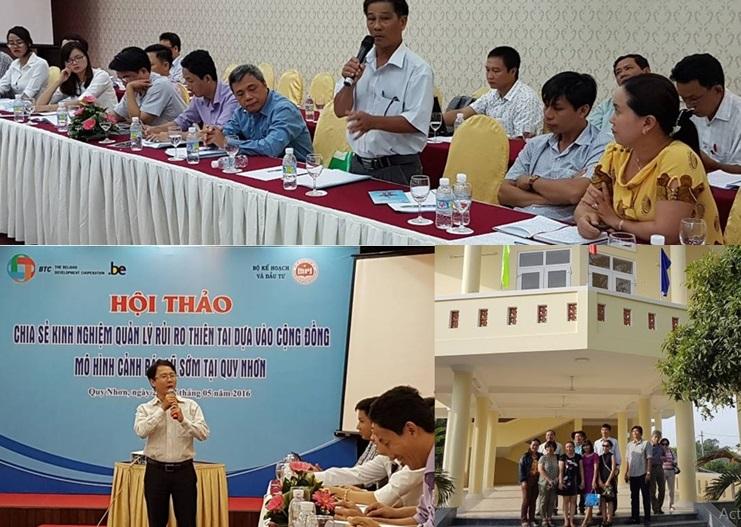Workshop Community Oriented Approaches to Flood Early Warning and Risk Reduction – Experiences from Quy Nhon, Binh Dinh Province
Thursday, 26 May 2016. QUY NHON– a Workshop was held with the stakeholders
of the Belgian-supported program for Integrated
Water Management and Urban Development in Relation to Climate Change on Community
Oriented Approaches to Flood Early Warning and Risk Reduction. Representatives
from the Project Coordination Units (PCUs) and relevant government departments
from the three program provinces (Ha Tinh, Ninh Thuan and Binh Thuan), as well
as experts from the Hanoi-based Technical Support Unit (TSU) listened to the
shared experiences from the recently completed project on Community Engagement
in Flood Early Warning and Risk Reduction of Quy Nhon City. This project,
implemented by Institute for Social and Environmental Transition-International
(ISET) and the Climate Change Coordination Office of Binh Dinh Province (CCCO
Binh Dinh), was funded by the Rockefeller Foundation under The Asian Cities
Climate Change Resilience Network (ACCCRN)[1].
At the workshop, ISET project officer Ms. Nghiem Phuong Tuyen delivered
presentations as well as project beneficiaries from the local level in the
flood affected communities in Nhon Binh and Nhon Phu wards of Quy Nhon city.
The workshop provided the unique opportunity for stakeholders from the
Belgian-supported climate change program to learn from the recent experiences
in Quy Nhon and consider how these lessons-learned can be applied in their own
provinces. In addition to flood early warning and community response, the Belgian
climate change program focuses on developing capacity at provincial and central
levels for assessing existing and future climate related risk and designing and
implementing response measures such as a revised climate change action plan and
climate-sensitive approaches in urban planning.
The key lesson learned from the workshop was that in order to provide a
comprehensive solution for disaster risk management it is necessary to
integrate systems for forecasting, warning, preparedness and response. The Quy
Nhon project demonstrated that an effective system for risk reduction consists
of not only equipment for rainfall and river level monitoring, but also a
computer based system for forecasting river levels, flood maps to interpret the
meaning of expected flood levels, and an organized system for disseminating the
flood warning and conducting flood response activities. The Quy Nhon experience
highlighted the importance of engaging with local government and local
communities to prepare procedures for sharing warning messages and initiating
response activities such as evacuation. By using the very
accessible technology of SMS messages, it was shown how the time to receive the
forecast, communicate with leadership, and initiate flood response actions
could be reduced just 15 minutes.
Coordinated as part of the workshop, the delegates conducted a site visit
to inspect of river level monitoring equipment and a newly constructed multi-purpose flood shelter.
The event concluded with reflection by delegates
on what they had seen and how these lessons could be transferred for application
in their own province.
More information can be found at http://bdkh.mpi.gov.vn/
Laatste nieuws van dit project
Geen nieuws

